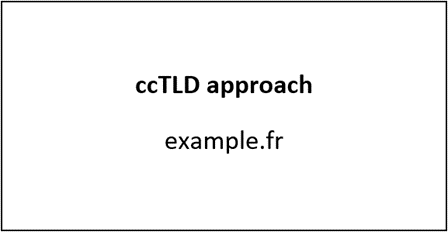A Definitive Guide to International SEO (+Tips How to Expand Your Reach)
The Internet allows billions of people worldwide to communicate freely and share data. While this traffic is usually clustered by language and region, more and more websites are hosting content for a global audience. For example, social media giant Facebook now supports up to 111 languages for its users.
Going global is a big step for any business, but a solid understanding of International SEO will help you reach your target audiences wherever they are. This article will cover the basics of international SEO and how to implement an effective strategy for your website so you can start growing your global footprint.
International SEO best practices
- Set up your hreflang tags
- Host sites locally
- Create tailored local content
- Avoid duplicate content
- Target International keywords
- Enter your company details into Google My Business
What is International SEO?
International SEO is a strategy to increase search engine rankings of your website in different regions and languages. It works by optimizing your website for companies like Google to identify which audiences you are specifically targeting.
You may have heard of Local SEO before. This is where a website is optimized to be more visible under localized search results. International SEO is the same thing but much grander, aiming to direct the right people to the right places on your global website.
How to implement International SEO
There are various ways to structure your site’s internationalized content to show up in relevant search results.
Like local SEO, a key component of International SEO is to identify your target audience.
- What languages and locations are they using?
- Which social media platforms are they using the most?
- And what are they searching for online?
These questions will help you better understand the people you want to reach and how you want to reach them.
To pick the strategy that works best for your website, you must also have an idea about the sorts of regions and languages your website will be targeting. For example, does your website aim to be multi-regional, multilingual, or both?
Most International SEO strategies will pursue one of the following site structures concerning the above question.
URL structures for global websites
ccTLDs
ccTLD stands for “country code top-level domain.” It is a two-letter ISO 639-1 code at the end of a domain name. e.g. a French ccTLD would have .fr at the end.
This URL structure sends the clearest signal to search engines about the sort of content hosted on your website. It easily directs traffic to your relevant site based on traffic by geographic region.
However, by spreading your online presence across multiple domains, each domain must earn its authority to gain SERP rankings. This can be an expensive process to pursue and maintain and may not be desirable for all website owners.
Rather, you may prefer to host one ‘core’ domain and spread your internationalized content across internal sections. This is not only a cheaper option, but it consolidates your search engine authority under one domain. The two most common approaches use subdomains or subdirectories.
Subdomains
This is where multiple versions of your site are placed on separate ‘third level domains’. It’s an optimal strategy for cases where your content remains largely the same regardless of the language used.
A downside is that it may dilute your domain’s authority on some search engines, at least compared to the subdirectory approach.
Subdirectories
Alternatively, you may place internationalized content on a subfolder, or “subdirectory,” of your root domain. Many websites favor this approach as it is cheaper to maintain than multiple ccTLD domains, and it consolidates link power better than subdomains.
International SEO best practices
Set up your hreflang tags
Hreflang tags are small pieces of code in the HTML header of your website that help search engines identify what language your page is using. These tags are used within subdirectory or subdomain site structures where it may not be obvious what language to present the website in.
It is vital to set up your hreflang tags correctly so that people are directed to the correct language version of your website. It means that people in the same geographic region will be sent to the correct version based on the language used in their search query. For example, a French Canadian would be taken to the French language version of your localized Canadian website.
You should take some precautions when setting up your hreflang meta tags. Notably, you should ensure that your website is always shown in the primary language of the region it serves. Then, you may present your users with a pop-up suggestion to optionally switch to an alternative language.
Host sites locally
Hosting your domain on a regional server is a great way to improve your visibility in local search results. That’s because search engines often match search results to websites with local IPs, pushing those websites further up results pages in those regions.
This mostly applies to websites that take the ccTLD approach to site structure, where you may choose to host each domain in its respective region. However, it is good practice for any website owner to host their site in the same region where the majority of their expected traffic comes from.
Not only is it beneficial for your website’s SEO, but it also means that your visitors will be able to access your site seamlessly with shorter load times.
For this reason, it makes sense to use a CDN (content delivery network) with an established global presence. That means that your local domains will be hosted in geographically proximate locations, allowing for lower latency.
Create tailored local content
You will need to make sure that your website’s content is relevant to each region and language that it aims to serve. Using a high-quality translation service is a must if you want your content to read and flow naturally.
You should also consider how different languages will appear in your website’s design. Let us cover two examples to illustrate this point:
- Arabic. Unlike most other writing systems, this language is read from left to right. You may also want to mirror different aspects of your Arabic site, such as the sidebar.
- Mandarin Chinese. This language uses logographic characters in the place of letters. The result of this is that much more information can be packed into a smaller space. Factor in that this is the 2nd most-used language on the Internet globally, and you will certainly want to restructure your site’s text accordingly.
You may also want to consider changing the content on your website between regions. The aim is to make your site’s content feel as “local” to the reader as possible. For example, this might be achieved by writing different blog posts for different countries or displaying prices in local currencies. Let’s say, for example, you sell phone systems, and on your website, you publish a blog about a hosted business phone system. If your content is aimed at people in numerous countries, ensure that the blog is published in all the relevant languages of your target audience.
Some businesses may even show a different landing page to reflect the preferred format of that region’s traffic. For example, some countries access websites on mobile browsers, whereas others mostly use PCs. Making your website accessible is crucial now that many workplaces offer to bring your own device policies since potential customers may not always have access to desktop browsers.
Avoid duplicate content
As much as reproducing your content for different audiences is useful, we must stress the importance of not falling into a dangerous trap: hosting duplicated content.
The danger here is that Google will not know which content to prioritize between ccTLD versions of your website. Consequently, they will compete with one other and crowd out the #1 spot.
To prevent this, you should use canonical tags on each ccTLD domain. This points to the other variations of your site’s content, ensuring they are not indexed separately by search engines.
Luckily, if you have taken the subdomain or subdirectory approach, Google will already know that the content has been localized to its respective markets.
Target International keywords
As you probably know already, a massive part of SEO involves targeting keywords. After all, these are the search terms most used by people to find the content they are looking for.
It is essential to consider that, just as languages differ greatly, so too do the keywords used by speakers of those languages. Therefore, you should conduct a separate keyword analysis for each language variation of your site. Then you will surely climb the search rankings as your content matches the most common search queries.
Enter your company details into Google My Business
Google My Business is a free tool that allows you to manage and optimize your business’s profile. You may enter publicly viewable details such as:
- Company addresses
- Opening times
- Phone numbers
This is useful for International SEO as Google will associate your business with search queries based on geolocation and time of day. The more information you give, the likelier it is that Google will direct visitors to your website.
Conclusion
International SEO is an attractive strategy for website owners looking to expand their reach to a global audience. Using this method, businesses can target particular language speakers or geographic regions and drive-up traffic to their site. While there are many approaches to achieving this, one thing is clear: web users appreciate content made specifically for them.




